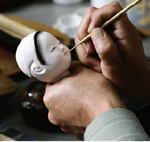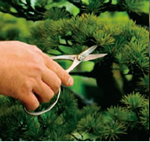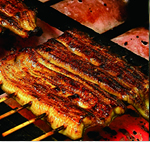What are the traditional industries of Saitama City?
Saitama City has designated Iwatsuki dolls, Omiya bonsai and Urawa eel cuisine as 3 traditional handicraft industries. These industries reflect the culture, regional characteristics and historical background of Saitama City and the surrounding areas and are infused with spirit and traditions passed down through the ages in Japan. These industries have a long history in our city and continue to contribute to the city’s vibrant economy, while still maintaining their traditional roots.
Iwatsuki Dolls

Details on the origin of the industry and reasons for its designation.
Doll making in Saitama Prefecture began in the Edo period as an off-season agricultural extra occupation in places such as Kounosu and Koshigaya, in response to demand from Edo, which had grown into a large metropolis. In Iwatsuki, there was also a house with the shop name of "Hina-ya", as shown in the documents, but it was not until the modern era that a full-scale production area was formed, and a Hina Doll Association was formed in the Taisho Period. The Great Kanto Earthquake which occurred in 1923 brought an infusion of technology from Tokyo, and during the period of rapid economic growth, the prefecture became the largest production area in the prefecture. Besides the paulownia head, which has been a traditional production technique since the Edo period, a wide variety of manufacturers of costume doll bodies, kimekomi dolls, armor and helmets for May decorations, and doll accessories have gathered here. In February 1978, "Edo kimekomi dolls" and in March 2007, "Iwatsuki dolls" were designated as traditional handicrafts by the Ministry of Economy, Trade and Industry. Doll-related community events are also popular, and they have become widely familiar to the public.
Omiya Bonsai

Details on the origin of the industry and reasons for its designation.
As for bonsai, which became popular in Edo, bonsai artisans were concentrated in what are now Taito and Bunkyo-ku. Omiya Bonsai Village was founded in 1925 by a group of Tokyo bonsai artisans who moved to the area after the Great Kanto Earthquake in search of a large area of land, fresh water, and air suitable for bonsai cultivation. After being incorporated into the former Omiya City, the administrative name of the town became "Bonsai-cho". At present, bonsai has spread throughout the world, and the word "BONSAI" has become a common word in the world. In the city, there is still a concentration of bonsai gardens, mainly in the Kita-ku, where bonsai cultivation is carried out using traditional handmade techniques that have been practiced since the Edo period.
Urawa Unagi(Eel)

Details on the origin of the industry and reasons for its designation.
The Aida Family Records, stored at the prefectural archive, mention an occasion in which eels were presented as a gift from the city of Urawa to the Kishu residency located in Akasaka, Edo. Also, the term “grilled eel merchant” is included in the Illustrated Map of Urawa (1844 - 1848), demonstrating that eels have been a popular Urawa specialty among both residents and visitors since the Edo period. Even now there remain long-established shops in Saitama City, mainly in Urawa Ward, still practicing traditional eel preparation techniques, such as “ripping”, “skewer beating”, “grilling”, and “saucing”.









